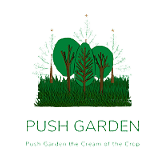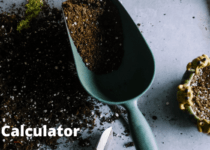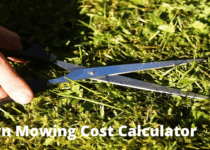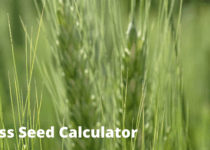Mulch Calculator
What is mulch?
Mulch is a material that we put on soil to preserve its moisture, prevent the growth of unwanted plants or weeds, and improve the aesthetic value of the covered area. Home Depot mulch is usually made from wood chips, but there are many other types of mulch and mulch alternatives. It is much harder for water to evaporate from soil covered with mulch as it prevents the sunlight from reaching the soil surface. However, a mulch layer that is too thick may also make it impossible for rainwater to soak into the ground. Thus, a typical mulch layer should be about 2 inches.
Mulch also retains heat that would be lost during cold nights and keeps your plants warm. Overall, mulch improves soil productivity. Gardeners like mulch for its ability to prevent the growth of weeds, as their seeds are left without sunlight after sprouting, halting their development. What’s more, many people like to use mulch in their gardens to make the landscape more beautiful. Mulch is available in many forms and colors, so it is suitable for any setting.
Types of mulch
Many materials are traditionally used as mulch, and there are also lots of mulch alternatives. Here, we present the characteristics of different types of mulch:
- Woodchip mulch – it is created when tree branches or larger stems are chipped. Cedar mulch and cypress mulch are examples of such products. Cedar mulch tends to be a little reddish but can be easily dyed into various other colors. Cypress mulch is very attractive for its blond color. Woodchip mulch can also be made by processing used packaging pallets. As you may have guessed, this version is much cheaper.
- Wood bark mulch – this is made from tree bark. The advantages of bark mulch is its natural color and look. Bark fragments are very irregular and the degree of randomness can create random interesting shapes and figures. By selecting pieces of bark mulch of specific sizes, you can change the speed of its decay. The smaller the chips of bark mulch are, the faster they will decompose.
- Straw mulch – well known for its ability to retain heat. You can use it to protect your plants (for example vegetables) from the cold. Straw mulch is also very cheap and easily exchangeable. As it is available in many different colors, so you can create some gorgeous compositions with it.
- Sawdust mulch – probably the most economical choice. Its particles are tiny and delicate, so they may be vulnerable to some weather conditions. Furthermore, an owner of a garden mulched with sawdust mulch will need to add some nitrogen (maintaining the correct ratio) to the sawdust mulch mixture. Otherwise, it will not decompose or, even worse – steal the nitrogen from your plants!
- Plastic mulch – used mainly in large-scale plant growing. Every plant has its own hole in the plastic cover through which it can grow.
- Rubber mulch – made from recycled tires. It has enormous insulating properties. Soil mulched with rubber mulch will stay warmer for a much longer time. It will also be better moisturized. Rubber mulch is also a perfect choice for children’s playgrounds. Because of that, it is often called playground mulch. Thanks to its elasticity, playground mulch can absorb more energy and therefore protect your child from getting hurt when they fall on the ground.
How much mulch do I need?
The first step in any mulching endeavor is establishing the volume of mulch needed. This is the volume of the desired mulch layer, and you can determine it in the following way:
- Find the length and the width of the mulch layer. For example, we can assume that its length is
l = 6 ydand width isw = 3 yd. - Calculate the area that you want to cover with mulch by multiplying the length by the width. In our case,
A = 6 * 3 = 18 yd². You can also type the area of the mulch layer directly into the mulch estimator if you want to cover an area of some more sophisticated shape. We’ve got calculators for to help you find the areas of many different geometric figures, such as a hexagon or a pentagon. For even more examples, visit the2d geometrysection of math calculators. - Determine the thickness (depth) of the mulch layer. Let’s say it’s
d = 2 in. - Multiply the area and depth of the mulch layer to obtain its volume:
18 yd² * 2 in (0.056 yd) = 1 yd³ = 27 ft³. - The volume of mulch required is equal to the volume of the mulch layer.
How many bags of mulch are in a yard?
Bag sizes vary according to the type of mulch, but the industry standard is two cubic feet. One cubic yard is twenty-seven cubic feet, so there are fourteen standard bags in each cubic yard.
With our Home Depot mulch calculator, you can calculate the number of bags that you need to buy for your project. Input the volume of the mulch bags you intend to buy into the Bag size field. Our mulch estimator will use the value for the amount of mulch needed and divide it by the volume of one bag. This will allow you to find how many bags of mulch you should buy. Now, you know not only how many bags in are in a yard, but how many bags are in your yard!
How to calculate garden mulch quantity?
Let’s deal with a real-life situation. Imagine that you have just built your beautiful house. If the roof still needs to be done, check out our roofing and roof pitch calculators. They will help you finish it quickly and cost-effectively. It would be a shame if you bought too much roofing, or, even worse – not enough materials and had to go back to Home Depot. What is your dream roof? We find the traditional warm red roof tile roofs very classy.
Now, back to the yard. Let’s say you would like to surround your house with a grass yard and pavement made of tiles. To calculate the number of tiles you need to buy before work commences, we recommend you to visit our tile calculator. It will even account for possible tile waste!
On one side of the grass yard, you want to dig a pool, while on the other you would like to plant some bushes, shrubs, and maybe even one or two trees. You have already bought soil and plants, so your mind is on the mulch purchase (which is probably what brought you here in the first place). It is a good investment; mulch will not only keep the moisture inside your soil but also prevent the growth of any unwanted weeds. It will also be quite pretty. We want to calculate the required quantity and cost of garden mulch. As you can see, we cannot just type the width and length of the area that we want to cover with mulch into our gravel estimator as it has a very irregular shape. How to deal with this problem?
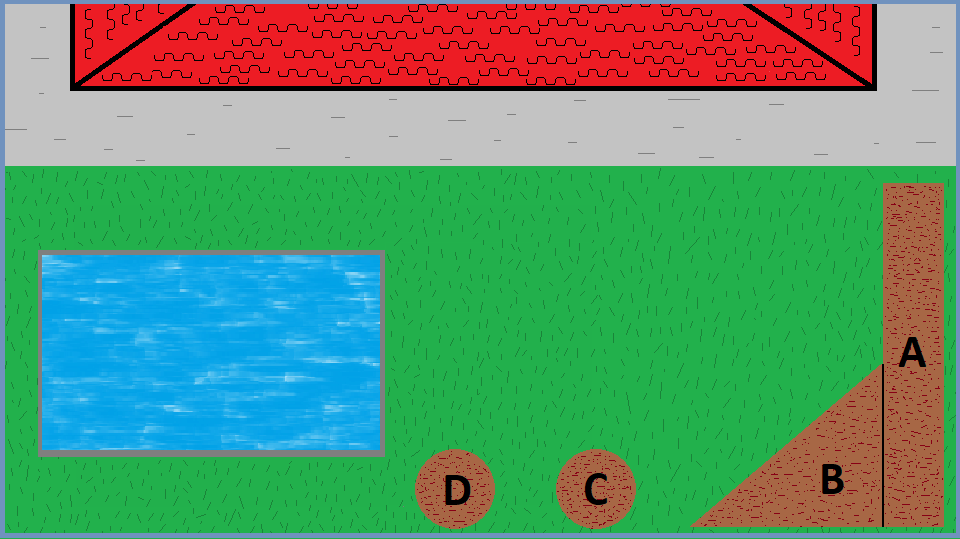
- First, we need to divide the area that we want to cover with mulch into four geometric figures: A, B, C, and D.
- Now, we have to take the measurements of each sector:
- Sector A is a rectangle with a width of 1 yd and a length of 10 yd;
- Sector B is a right triangle, and its catheti (the two sides creating a 90-degree angle) have lengths of 5 yd and 6 yd;
- Sector C and D are the same circles, each with a radius of 1.5 yd.
- Let’s calculate the area of each sector:
- Sector A: the area is equal to 1 yd multiplied by 10 yd, which gives 10 yd². To expand your knowledge of rectangles and to discover the most rectangular countries in the world visit the area of rectangle calculator!
- Sector B: the area of a right triangle is equal to the half of the product of lengths of its catheti. In this case, it is 5 yd multiplied by 6 yd, and divided by 2, which gives 15 yd². To learn more about the right triangle and other interesting quirks of the triangular world visit our right triangle area and triangle area calculators.
- Sector C, and D: the area of a circle is equal to πr², where r is the radius of the circle. As we have measured, the radius of both our circles is 1.5 yds. When we put it into this equation, we will get approximately 7.1 yd². We could also use the radius to calculate the circumference of our circle. Visit the circumference calculator to learn how to do it!
- Now, we have to sum up these four different areas:
10 yd² + 15 yd² + 7.1 yd² + 7.1 yd² = 39.2 yd²From this point on, we can use our mulch calculator! (see the instruction in how much mulch do I need? paragraph.) - It is time to choose the desired thickness (depth) of the mulch level. Let’s make it 1 inch. We need to assure that the mulch layer will be thick enough so that the earth underneath it will not be visible. Furthermore, the thicker the mulch layer is, the better it will keep the water inside the soil, and the longer it will last. A thick mulch layer will be more resilient to the wind, heavy rain, and even your pets ?.
- You can calculate the required volume of mulch by multiplying the acquired area by the desired thickness of the garden mulch level:
39.2 yd² * 1 inch (0.028 yd) = 1.089 yd³ = 29.4 ft³ - Knowing the volume of one bag of mulch, we can calculate how many bags we will have to buy. Maybe it will make it easier for you to imagine how much space the bags will take up in your trunk. If your garden is very large, maybe you will end up with a truckload of mulch!
29.4 ft³ / 2 ft³ = 14.7 bagsIn this case, it seems that you will have to buy 15 bags with some to spare. You can return to how many bags of mulch are in a yard? paragraph for more instructions. - The last things to assess are the mulch’s estimated weight and cost. Knowledge of the weight of the cargo may come in handy when it comes to transportation; it would be nice to know that your truck or trailer will endure the burden of your purchase. Check the weight of one bag of mulch, the information may be written on the bag. If it isn’t, ask a store employee to help you. You need to multiply the weight of one bag by the number of bags. You can return to the How much does a bag of mulch weigh? paragraph for more details.
- And last but not least – money. Can you afford such an expense? Maybe you could save some money by reducing the thickness? To know that you need to calculate the total cost. With our Home Depot mulch calculator, you can do this by multiplying the number of bags by the price of one bag of mulch. You can use our mulch estimator to deal with these calculations.
